The PowerWalker VI 1500 CSW UPS Review: Trying For True Sinewave on a Budget
by E. Fylladitakis on April 13, 2022 8:00 AM EST- Posted in
- Cases/Cooling/PSUs
- UPS
- PowerWalker
- BlueWalker
- 1500VA
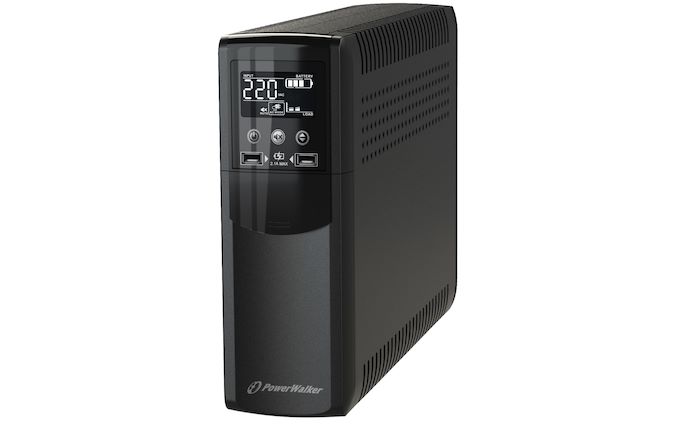
Editor's Note: Today we're kicking off a new review category for AnandTech: Uninterruptible Power Supplies. These devices are becoming increasingly common as desktop users are looking for laptop-like reliability. All the while, it's also an area that we feel is lacking in good, EE-enlightened systematic reviews. So our multi-talented power guru, E. Fylladitakis, is applying his skills to UPSes. As this is a new area for us, please let us know what you think in the comments below!
While Uninterruptible Power Supplies are hardly a new thing in the PC space, the tried-and-true battery backups for desktop PCs have been undergoing a resurgence in popularity in recent years. Improvements in power delivery technology such as GaNs have been reducing costs and improving reliability, and meanwhile lithium-ion batteries, with their much greater energy density/lower volume, are starting to make inroads on the UPS market as well. All the while, with laptops outselling desktops in the consumer PC market, a PC that doesn't shut itself down during a power outage is becoming the norm, rather than the exception. So what better time is there to take a look at UPSes?
To kick off our inaugural UPS review, we're starting with a 1500VA unit from BlueWalker. BlueWalker is a company that originates from Germany and specializes on the design and marketing of power-related equipment. The company was founded in 2004, making it one of the oldest household UPS/AVR manufacturers that still exist to this date.
BlueWalker is marketing their retail products under the PowerWalker brand name and has a very wide portfolio of both hardware and software products available. For today’s review, we are taking a look at the PowerWalker VI 1500 CSW, a 1500VA/900W UPS that boasts a true sinewave output.
| PowerWalker VI 1500 CSW | |||
| Power Capacity | 1500VA/900W | ||
| Output Voltage | 230 VAC | ||
| Input Voltage | 170-280 VAC | ||
| Type | Line Interactive | ||
| True Sinewave | Yes (ish) | ||
| Battery | Lead-Acid, 2x 12V/9Ah | ||
| Full Load Backup Time | 3.5min | ||
| Half Load Backup Time | 10min | ||
| Battery-Backed Sockets | 2 (Type F) | ||
| Surge Protected Sockets | 2 (Type F) | ||
| USB-A Outputs | 2 (2.1A) | ||
| Ethernet Surge Protection | Yes | ||
| LCD Display | Yes | ||
| Dimensions | 99 x 280 x 410 mm | ||
| Weight | 13.1 kg | ||
Given that BlueWalker is a German company, there should be little surprise that the PowerWalker VI is geared towards the European market. The UPS only outputs at a nominal 230V, and similarly, is only designed to accept voltages around that range (sorry, Americans!). Past that, this specific version comes with 2 battery-backed Type F sockets, as well as another two sockets with just surge protection. With 216 Wh of lead-acid battery capacity, it's rated to run a full load for a few minutes, stretching into the double-digits at a half load or less.
Of particular interest with this UPS is the price: true sinewave units have historically carried a significant price premium, but BlueWalker isn't charging nearly the same premium as true sinewave UPSes from other major manufacturers, making the PowerWalker VI 1500 CSW a much cheaper UPS – and at around €180, one that's popular on the market as a result. But can it live up to the same high power delivery expectations without the same wallet-busting price? Let's find out.
The PowerWalker VI 1500 CSW UPS
We received the PowerWalker VI 1500 CSW in a relatively simple cardboard box, with the heavy unit well-protected by thick packaging foam pieces. Inside the box, we found a CD with the compatible monitoring software, thorough manuals in several languages, and a USB cable.
The PowerWalker VI 1500 CSW is a tower-style UPS with an LCD screen at the front. Measuring only 410 mm deep, 100 mm wide, and 280 mm tall (16.2 in × 4 in × 11 in), it is very compact for a unit with that high of an output. There are also two USB charging ports at the front, right under the LCD screen.
The LCD screen, once turned on, will show the basic electrical figures of the unit, such as the voltage, the load, and the remaining battery time. It stays off most of the time and the user needs to press the power button momentarily in order to turn it on.
At the rear side of the tower, we find four power sockets. We are testing the version with the four Schuko (Type F) sockets, but BlueWalker also offers this unit with UK and FR sockets, plus a version with eight IEC socket.
Note that only two sockets offer battery backup, as the other two are for surge protection only. In fact, having just two sockets connected to the unit’s battery backup output is an atypically low number of powered sockets for a 1500VA UPS, as we usually see more.
Along with power protection, there is also a non-destructive circuit breaker and an Ethernet surge protection path (input-output jacks) available with the PowerWalker. Finally, there is a fan that will only turn on when the unit is running on batteries, charging its batteries, or in auto voltage regulation (AVR) mode. The AVR mode essentially has the unit running on grid power but forces the AVR circuit to operate, which may be useful in some situations where the power grid is energized, but very unreliable.
More than half of the front fascia is a door that must be removed in order to access the battery compartment. It is held in place by two small screws at the bottom side of the unit. Once removed, a very large connector can be seen that connects the batteries to the main unit. This needs to be unplugged in order to remove the batteries. If the batteries need to be replaced, the wiring must be unplugged and transferred to the new batteries. We found two Leoch 12V 9Ah batteries in the unit, connected in series (24V 9Ah output). Leoch is a Chinese manufacturer of batteries that is amongst the largest on the planet and whose products are considered to be of fairly good quality.
Cracking open the unit’s body, we can see the unit’s large transformer and circuitry. The transformer actually is not very large for the 1500 VA unit and the amount of cooling it receives from the fan is fairly low. This will not be a problem for the stock unit, where the batteries will likely last just a few minutes, as there will not be enough time for the transformer to overheat. Modifying the unit’s batteries to increase its autonomy in any way without greatly upgrading its cooling capabilities would be, however, nothing short of suicidal.
The power circuitry left us with mixed feelings. The relays are supplied by Golden Relays, a reputable manufacturer, yet the capacitors are supplied by Aishi and Jamicon, suppliers that are considered to be mediocre. Eight IRF3205 MOSFETs generate the output when the unit switches to its batteries, MOSFETs that are proven to be reliable but, having been released well over two decades ago, are nowadays very cheap and their performance is relatively poor compared to more modern MOSFETs. The workmanship is very good but the circuitry layout is fairly outdated.


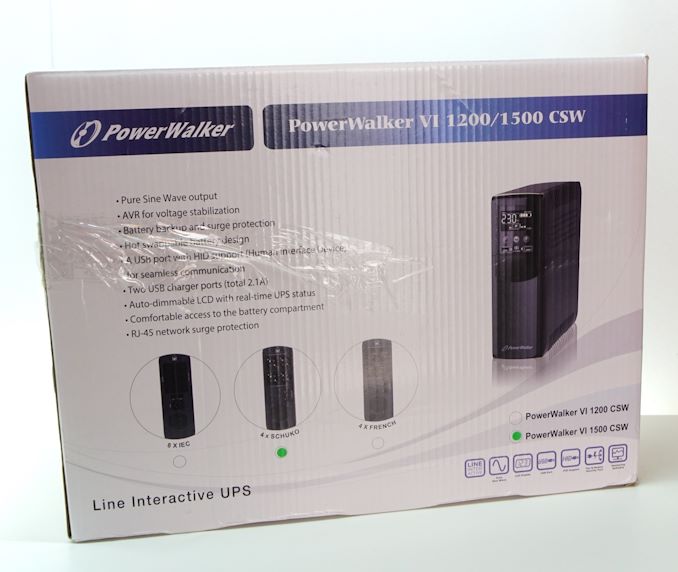

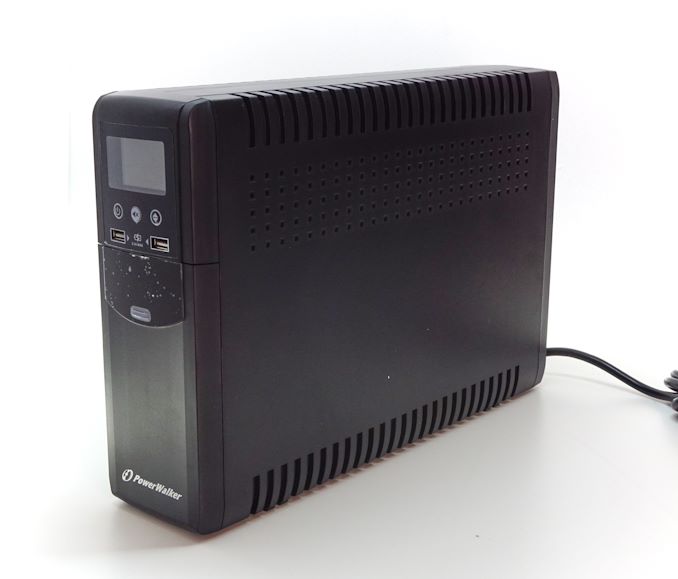
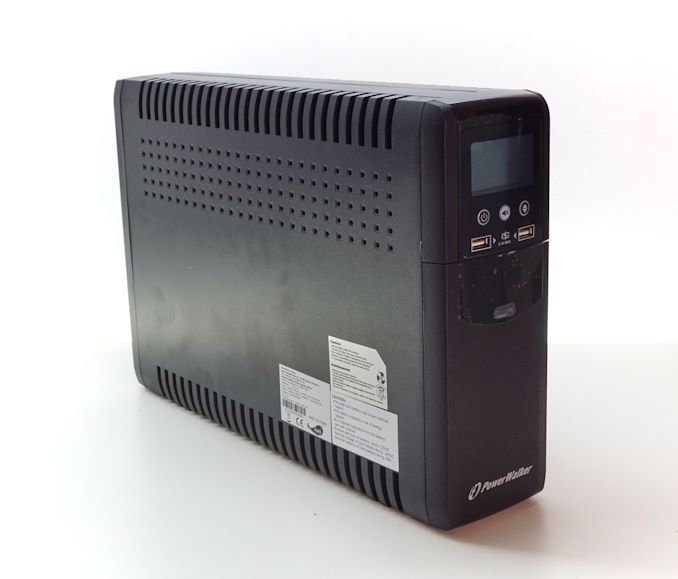
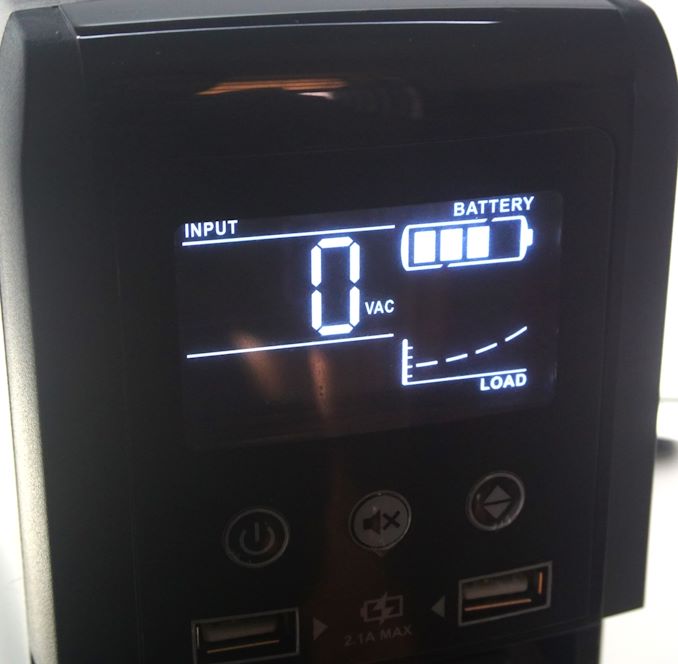

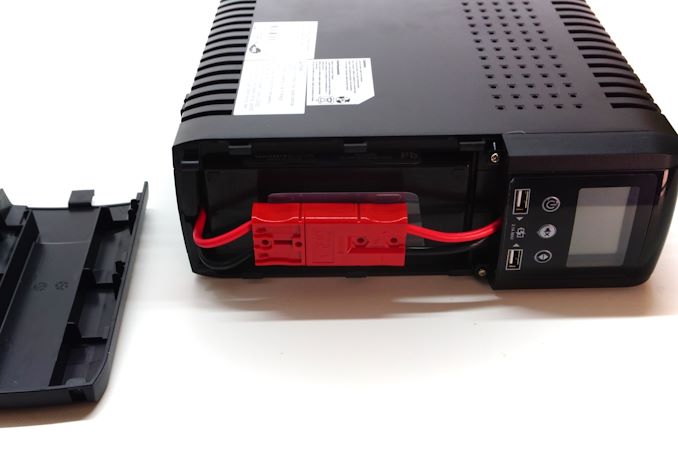
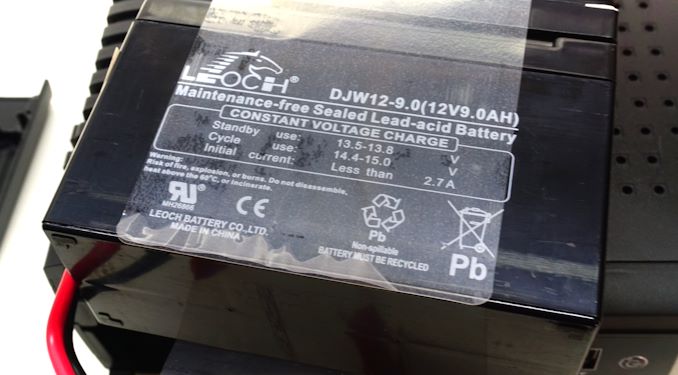
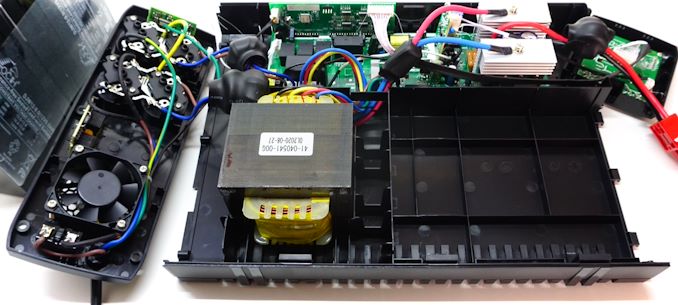

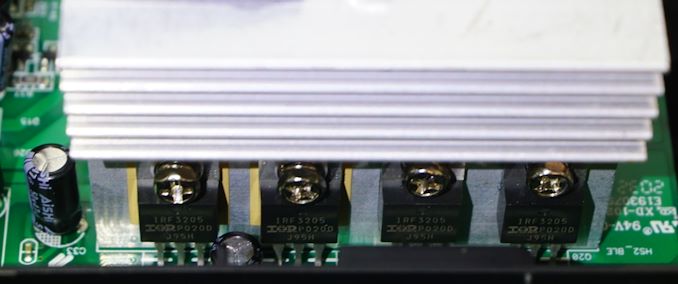

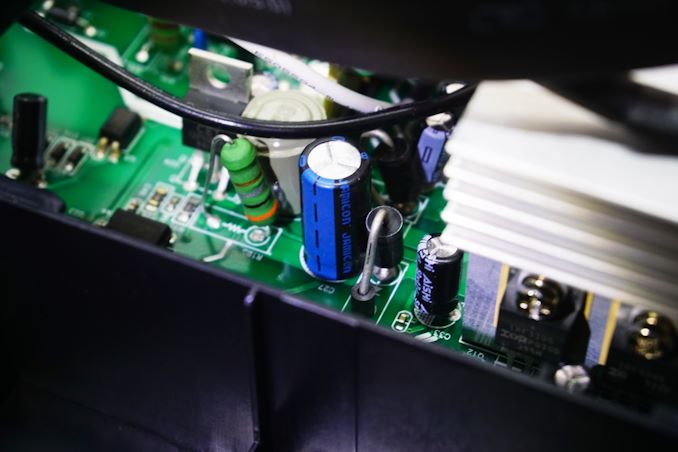
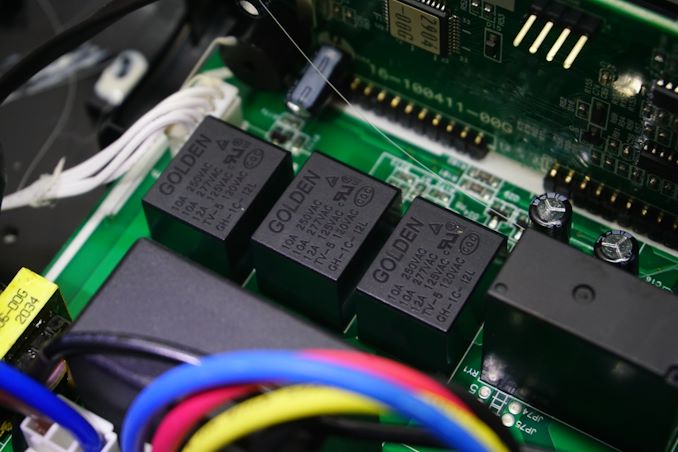








107 Comments
View All Comments
Vatharian - Saturday, April 16, 2022 - link
Sadly, almost anything that has electric motor inside, requires AC. Where you don't have access to gas line, induction is also a must. Do you really want to run 7-8 kW to induction stove or 2-3 kW to oven with arm-thick cables with DC? The best solution is to have dedicated circuits to both. I can picture a variation of UK type plug (because you DON'T want US-style ones for that... or for anything, really) that could handle both AC and DC from same outlet with complete separation of circuits and safe disconnection even from high current DC.I absolutely see the worth of dedicated DC circuitry, however for it to be safe, the craftsmanship during installation would have to be impeccable, with highest quality materials, and let's face it, depending on the size of the house (or apartment) it would be very expensive.
Chaser - Sunday, April 17, 2022 - link
I don't believe Cyberpower and APC's home consumer marketed UPS products are losing any sleep.Valantar - Friday, April 22, 2022 - link
I don't know what equipment from those brands you're looking at, but most of what I can find, while higher capacity and more feature-packed than this, are an order of magnitude higher in price than this is too. So while high-end UPSes might be in a process of being "disrupted" (god how I hate that nonsensical term), the one under review here certainly isn't.t.s - Thursday, April 14, 2022 - link
Yes, there's lithium UPSes, but as far as I know, it used Li-Ion or Li-Po, not LFP. 500-800 Cycle vs 3.500 cycle. LFP has far more cycle, and safer too.And yes, Those UPSes with Lithium is expensive as hell. Better modify the lead acid ourselves. For $1.800, you can get 24v 200AH LFP + BMS + connector + cable + fan + APC SMT750IC (pure sinewave) and still have changes. 24v 200AH = ~5KWH, translates to days when offline.
bananaforscale - Thursday, April 21, 2022 - link
I wouldn't because LiFePO4 batteries differ dramatically from lead-acid batteries in charge requirements (current curve, voltage and such; for one, lead-acid is charged typically at 14.4V which is much too high for LiFePO4). Unless of course you plan to replace the charge circuit at which point you might just as well build it from scratch.asmian - Wednesday, April 13, 2022 - link
"nagual UPS review" -> "inaugural", perhaps...Since the writer makes the statement that UPS is making a comeback, and makes some fairly strong technical comments about the quality of the components and circuitry, it would be very interesting to see a review with a mix of new and better-known brands in their current incarnations pitted against each other, to indicate the current state of the market.
Ryan Smith - Wednesday, April 13, 2022 - link
Thanks!mode_13h - Wednesday, April 13, 2022 - link
Another suggestion: my current UPS (APC Smart-UPS C 1500) had pretty bad coil whine, for the first few years I owned it. This happened when it was on normal A/C power, and I reproduced it both at home and where I work. I even returned it under warranty, but the replacement did the same thing.So, I'd highlight this as an area to watch out for. In a quiet room, that can be a real annoyance.
E.Fyll - Wednesday, April 13, 2022 - link
Thanks for the feedback. I will surely point out such issues if they occur.The most common cause of coil whine is poor quality power input. Harmonics are to blame 90% of the time. That clearly is not the case here though, since you had the same problem at two entirely different places. Someone probably just did not glue down an inductor that should have been glued down.
Mikewind Dale - Wednesday, April 13, 2022 - link
I own two Cyberpower CP1500PFCLCD PFC Sinewave UPS (1500VA, 1000W), one my Ryzen 7 2700X and the other for my ThreadRipper Pro 3955WX. And a friend of mine - on my recommendation - bought the same for his ThreadRipper Pro 3955WX.So far, I have had no issues. I don't get many power outages, but when I do, they have always worked.
So that's one more to test.